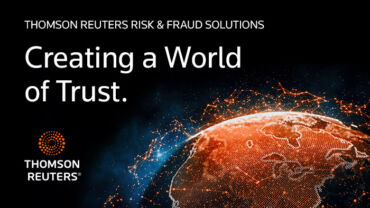The use of digital or cryptocurrencies as a means of exchange has grown so large, so fast that both crypto-based businesses and mainstream financial institutions have reached a regulatory tipping point
In order to assert their legitimacy and expand their market reach, cryptocurrency exchanges and crypto-based business platforms need access to mainstream financial institutions. In order for traditional banks and other institutions to feel comfortable doing business with crypto-based entities, those entities need to follow the same compliance rules as other financial institutions and businesses. At the very least, that means adhering to the same anti-money laundering (AML) protocols and customer due diligence (CDD) or know-your-customer (KYC) requirements as any other business.
Transparency and trust are the issues, and in the eyes of many detractors, the current digital-currency infrastructure doesn’t have enough of either.
The pros & cons of regulating crypto
Until recently, however, the whole idea of regulating the crypto market was considered antithetical to the ethos of anonymity and decentralization that made digital currencies so attractive in the first place. When Bitcoin was created in 2009, the whole point was to create a medium of exchange that operated outside the mainstream economic ecosystem of big banks and corporations.
Now, however, large factions in both the crypto industry and the mainstream financial community see stricter government regulation as necessary and beneficial. A better public-policy framework is the best way to create an economic infrastructure in which both digital currencies and traditional fiat currencies can co-exist, the argument goes. And this will help create the foundation of trust necessary for the cryptocurrency industry’s long-term viability.
However, the main part of the problem is that although most major crypto exchanges now require customers to provide at least some basic personal information (name, address, date of birth), many still do not. Further, most do not go to the trouble of establishing proof of life, such as by cross-comparing personal data with government databases and other publicly available information, or even establishing a risk score. There also isn’t an established method (or ethos) for sharing crypto customer information with authorities or law enforcement.
For more on the status of crypto regulation worldwide, check out the full digital version of the Cryptos on the Rise 2022 report from Thomson Reuters Institute and Thomson Reuters Regulatory Intelligence
The other part of the problem? Like the casino industry in the 1990s, the crypto industry needs to rinse itself of the stink of crime. Crypto’s anonymity — once its biggest selling point — is now its greatest liability. Indeed, the ability to exchange money anonymously is precisely why cryptocurrencies are so popular with drug dealers, human traffickers, arms dealers, terrorists, money launderers, and other criminals. When ransomware hackers hold a business hostage, for example, there’s a reason they want to be paid in crypto.
Crypto-based criminal activity is also making it difficult for genuine crypto platforms to establish the legitimacy and trust that they desperately need in order to expand. Indeed, so many people dabbling in digital currencies have been scammed out of so much money recently that traditional financial institutions are understandably wary. According to the Federal Trade Commission, 46,000 people lost more than $1 billion to crypto scams between Q1 2021 and Q1 2022, and currently, crypto scams account for 40% of all dollars reported lost to fraud on social media.
Those in the pro-regulation camp argue that implementing more robust procedures for customer identify verification — such as CDD and KYC processes, and AML requirements — would go a long way toward deterring the criminal element. This would also help establish the credibility and stability necessary for the crypto industry’s long-term viability.
Mainstream financial institutions want these same safeguards not only to mitigate risk and comply with the AML requirements listed in the existing Bank Secrecy Act (BSA), but to create a safe on-ramp to a potentially huge new market.
How regulators are cracking down
Moving from why the crypto industry needs more regulation to how it is to be done is the challenge lawmakers and financial regulators are grappling with at the moment.
There are many different types of so-called “virtual asset service providers,” after all, and new ones are being invented all the time. Beyond well-known cryptocurrency exchanges such as Binance, Kraken, and Coinbase, which is where most people purchase or trade digital assets; there are also stablecoin issuers, marketplaces for non-fungible tokens (NFTs), and decentralized finance (DeFi) protocols, the latter of which uses blockchain technology to create self-executing “smart contracts” that require no human intervention at all.
Setting up regulatory guardrails to keep up with the proliferation and popularity of all these digital assets has become a global challenge. At the moment, the United States is behind the European Union, United Kingdom, and some other countries in terms of enacting legislation to regulate digital assets, but the Biden administration is trying its best to catch up.
Currently in the United States, cryptocurrency exchanges (though not other forms of digital assets) are supposed to be regulated under the BSA, but the law has yet to be amended to specifically apply to digital asset service providers, so enforcement has been spotty.
The new US framework
To fix that, the Biden White House recently released a framework for US crypto regulation based on six months of research and input from all relevant agencies and stakeholders, including the US Treasury, the Securities and Exchange Commission, and the Federal Reserve.
Dubbed the First-ever Comprehensive Framework for Responsible Development of Digital Assets, the document outlines a variety of policy recommendations that are meant to represent a “whole of government” approach to the regulation of all digital assets, including stablecoins and NFTs.
The framework addresses a wide variety of issues regarding consumer protections, national security concerns, environmental sustainability (mining cryptocurrencies requires a lot of electricity), and law enforcement. It also proposes avenues for international cooperation through such organizations as the Organization for Economic Co-Operation and Development and the Financial Stability Board. The framework even contains suggestions for how the Federal Reserve might release its own government-backed digital dollar, which Fed Chair Jerome Powell has said could eliminate the need for cryptocurrencies altogether, bringing the whole argument about digital assets full circle.
Nothing in the framework has been enacted into law yet, but it’s only a matter of time. Stricter regulation of the cryptocurrency market may be tearing away the cloak of anonymity that criminals and true believers cherish so much, but if the goal is to make all digital assets safer and more useful for everyone else then the cloak must be removed.







